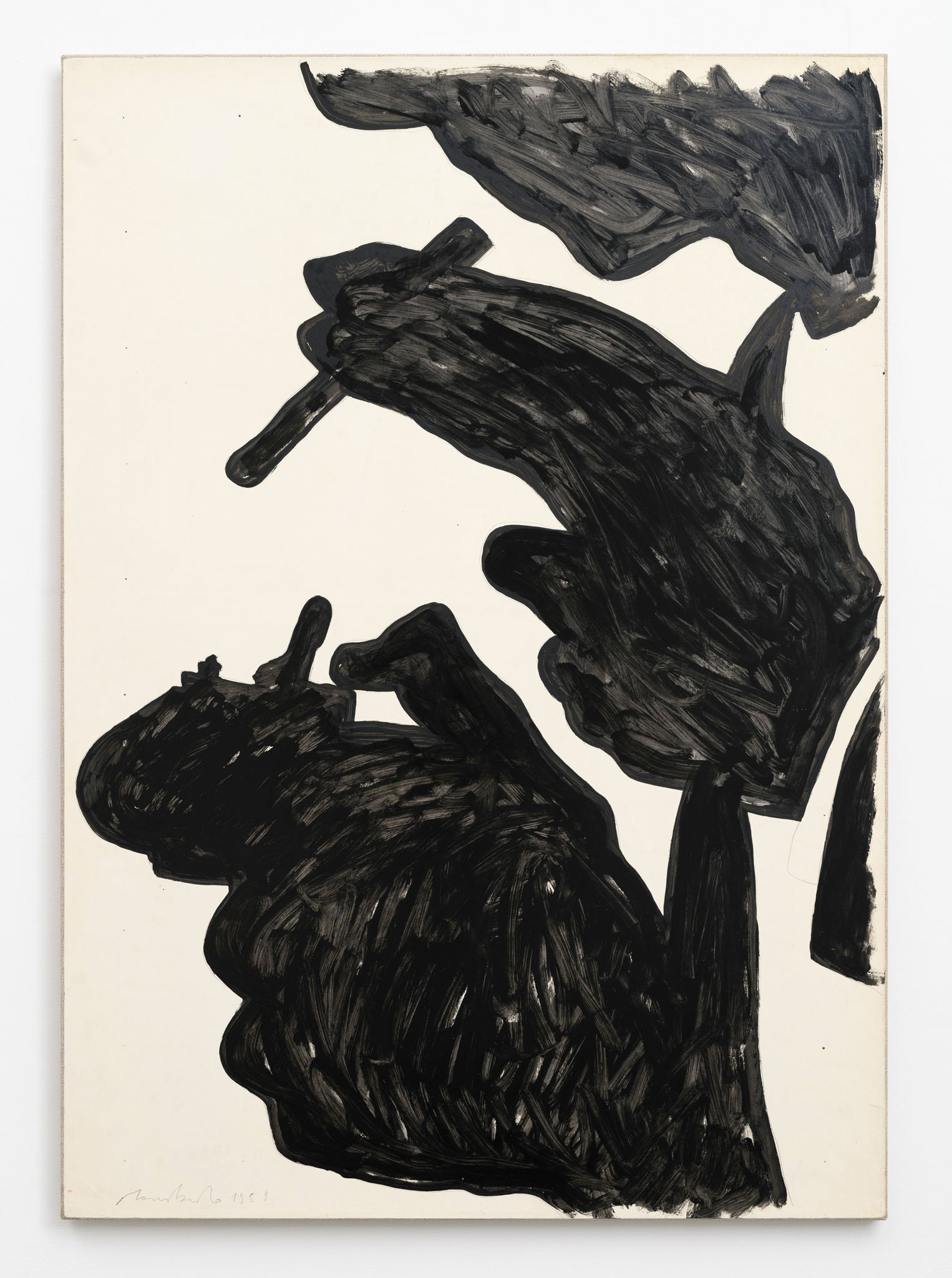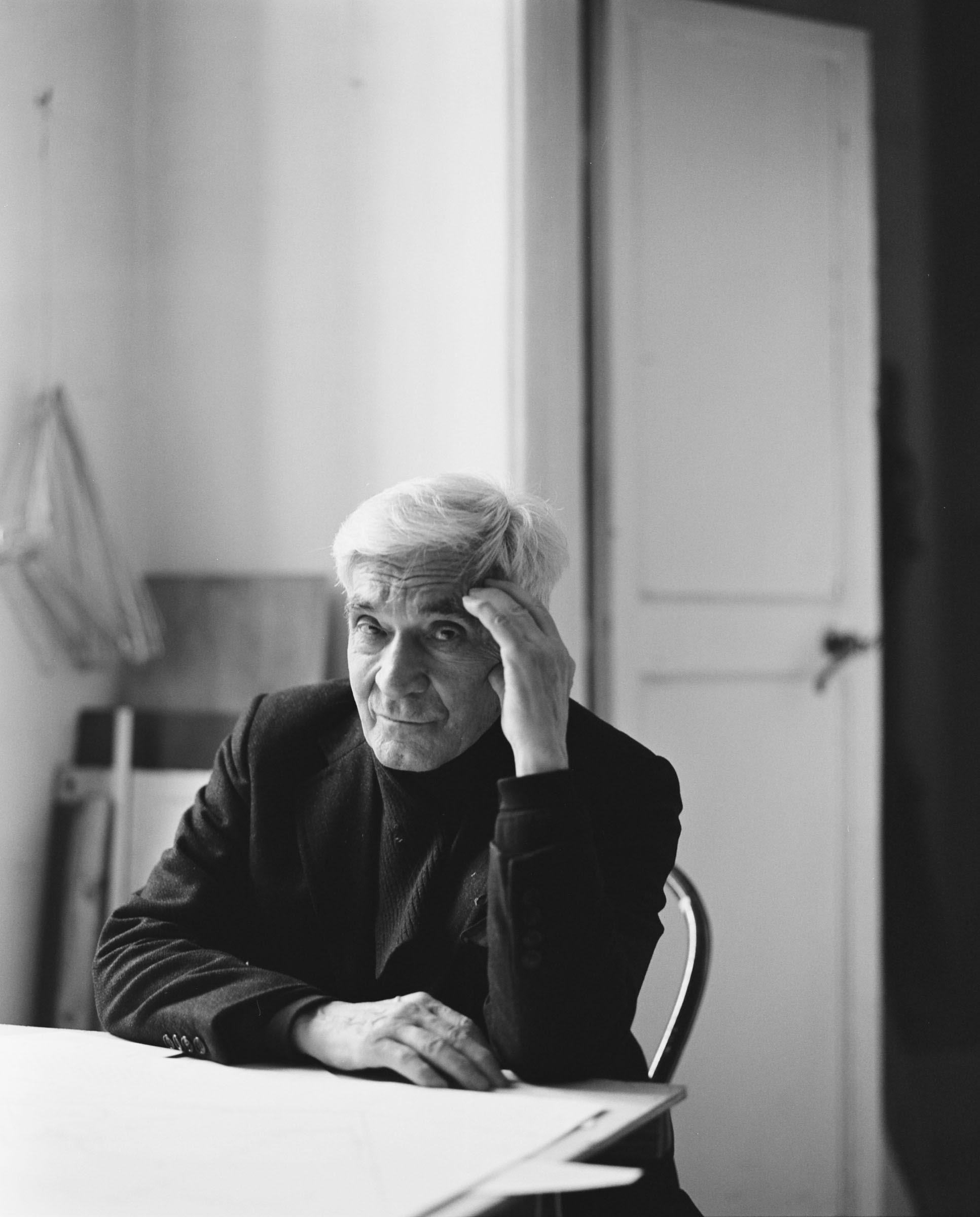
August 2023
CONVERSATIONS
A monthly column of interviews with excellent people by Ricky Lee.
Sergio Lombardo
Sergio Lombardo, De Gaulle, 1961—1963, enamel on paper laid on canvas, 39 x 27 1/2 inches, photo by Giorgio Benni
“When I first created the series Gesti Tipici in 1961, my aims weren’t to be a painter but to study the psychological impact of authoritarian attitudes perceived on the shadow by peripheral vision.”
For the second edition of the Independent 20th Century art fair, taking place from September 7 to 10 at Cipriani South Street in New York City, Rome-based 1/9unosunove Gallery presents the work of Sergio Lombardo, one of Italy’s leading contemporary artists. Lombardo’s series Gesti Tipici, large-scale dichromatic paintings showing recognizable silhouettes of political figures and ordinary people performing what he has defined as something ‘typical’ or generic, is as relevant and intriguing today as it was when Lombardo first created them in the late fifties and early sixties.
So, who is Sergio Lombardo, and what’s his (timely) story?
I am a scientist engaged in advanced research regarding visual aesthetic perception.
Tell me about your series Gesti Tipici.
When I first created the series Gesti Tipici in 1961, my aims weren’t to be a painter but to study the psychological impact of authoritarian attitudes perceived on the shadow by peripheral vision. Because such attitudes were typical of politicians, I used politicians as models. I found them in newspapers and magazines. At that time, “nonverbal communication” did not exist as a science. Desmond Morris published his book, Man and his gestures, many years later.
Sergio Lombardo, Krusciov, 1961—1963, enamel on paper laid on canvas, 39 x 27 1/2 inches, photo by Giorgio Benni
Sergio Lombardo, Kennedy con sigaro, 1961—1963, enamel on paper laid on canvas, 39 x 27 1/2 inches, photo by Giorgio Benni
Why are these works relevant today?
The Gesti Tipici are becoming important today because there is a revision of art history, and some Italian avant-garde art has been ignored as yet.
Are there common themes or messages in your various series?
All my research has been devoted to a scientific approach to visual art. My Eventualist Theory connects all my work, even if each series is different. My work is consistent with the theory rather than with the style.
Sergio Lombardo, Rockefeller, 1963, enamel on paper laid on canvas, 39 x 27 1/2 inches, photo by Giorgio Benni
Sergio Lombardo, Uomo Politico in un atteggiamento tipico, 1962, enamel on canvas, 90 1/2 x 71 inches, photo by Giorgio Benni
How would you describe your aesthetic or your visual language?
My visual language is minimalist, as the scientific language must be. Each work or series is the solution to aesthetic problems as published in the Rivista di Psicologia dell’Arte.
Sergio Lombardo, Accendino, 1961, enamel on paper laid on canvas, 27 1/2 x 39 inches, photo by Giorgio Benni
Sergio Lombardo, Untitled, 1961—1962, enamel on paper laid on canvas, 27 1/2 x 39 inches, photo by Giorgio Benni
How have your artistic influences and interests changed over the years?
Over the years, my interest has not changed much; it has become more and more complex. It comes from Futurism, evolving futurist issues like interaction with real living experience, a provocation to get the public to react, technical evolution, and idealized engineering.
Portrait of Sergio Lombardo circa 1963 by Mario Dondero
Besides your presentation at Independent 20th Century, what other projects or series are you working on?
Besides the strong recent interest of international art history on my historical work since 1958, I am now working on stochastic complex systems. My algorithms evolve according to aesthetic analysis with mathematical means. Some new faces are so unpredictable and far from human intuition that I named them Extra-Humans. Of course, they wouldn’t exist without the Gesti Tipici born 60 years before. Today, I finished a new (digital) work with stochastic faces inserted in a complex tiling pattern 576 meters long.
Sergio Lombardo
1/9unosunove
Independent 20th Century
September 7—10, 2023
New York
1/9unosunove
@unosunove
Independent
@independent_hq
Ricky Lee
@mr__ricky__lee
Sergio Lombardo portrait by Joao Canziani
Sergio Lombardo, a psychologist and artist born in Rome in 1939, is one of the main Italian artists who renewed the European and International artistic language in the late fifties and early sixties. Lombardo was an exponent in the late 50s of the Nuova Scuola Romana (New School of Rome) and the leading figure of the international historical avant-garde and Italian Pop Art. He is the father of the Eventualist Theory, which led to an important artistic and theoretical movement based on experimental methods.
Lombardo’s work is characterized by a programmatic discontinuity and can be grouped into distinct periods or cycles. His works have been exhibited at the National Museum of Modern Art in Tokyo (1967), the Jewish Museum in New York (1968), the Centre Georges Pompidou in Paris (1969,1995), the Tate Modern in London (2015), the Walker Art Center at Minneapolis (2015), the Dallas Museum of Art (2015), and within the museums in Moscow, Saint Petersburg, Warsaw, Stockholm, Johannesburg. Furthermore, the Philadelphia Museum of Art has recently acquired an important painting by Sergio Lombardo John Fitzgerald Kennedy (1962—63), which was on view in the exhibition International Pop.
Ricky Lee photographed at 53 Restaurant, New York. Courtesy Fotini Lane.
Ricky Lee is a writer and curator based in New York.




